The volcanic island of Madeira is a popular tourist destination known for its natural beauty, mild climate, and outdoor activities such as hiking, biking, and surfing. It is home to a unique and diverse range of flora, including the Madeiran Laurel Forest, a UNESCO World Heritage Site. It belongs to Portugal; however, it is an autonomous region like the Azores.
The official language of Madeira Island is Portuguese, but English is widely spoken, especially in tourist areas.
Overview
| Madeira | Details |
|---|---|
| Country | Portugal |
| Location | Island on the Atlantic Ocean |
| Distance from Portugal | 900 km |
| Territory | 741 km2 |
| Languages | Portuguese, English |
| Top things to do | Hiking, surfing, canyoning, swimming, boat touring |
| Top attractions | |
| Highest point | Pico Ruivo (1861 m) |
| Islands of the group | Madeira, Porto Santo, Desertas Islands, Savage Islands |
Gallery


Map - Where is Madeira Located?
Madeira is an island located in the Atlantic Ocean, about 900 kilometres off the coast of Portugal and 400 kilometres from the Canary Islands. It is the largest island of the Madeira archipelago, which contains several small islands. You can reach the island by plane. There are regular direct flights from Lisbon. The capital, Funchal (located in the South), is only 30 minutes from the airport.
Sign in to enjoy an ad-free experience and stay up-to-date with our latest features.



Islands of Madeira
There are four islands in the Madeira archipelago. You can join daily boat tours from the main island to the other ones.
- Madeira
- Porto Santo
- Desertas (uninhabited), which contain multiple small islands
- Selvagens / Savage Islands (uninhabited), which contain many small islands
3 Things You Should Know ...
- Madeiran cuisine is a fusion of Portuguese and African influences, focusing on seafood, fresh produce, and local wines.
- Madeira Island is known for its colourful and lively festivals, including the Carnival of Madeira and the Flower Festival.
- Madeira Island's economy is mainly based on tourism, agriculture, and wine production, with bananas and sugar cane. Wine is the main export product.
Video
Weather
Madeira's climate is mild and subtropical, with average temperatures ranging from 16°C in winter to 26°C in summer. If you are looking for winter sunshine, it will be easy. In December, January and February, the temperature in Anappali can reach 20°C in its lower parts below the "banana line", where banana cultivation is best.
Public Transportation
Madeira's public transportation system is extensive and efficient, making it easy for visitors to explore the island. Here are some useful and detailed options:
- Buses: A comprehensive bus network covers most areas of the island. Horários operates the buses. The fares are affordable. The buses are modern and comfortable, with air conditioning and free Wi-Fi. The main bus terminal is in Funchal, but several smaller terminals are throughout the island.
- Aerobus: Aerobus is a shuttle service that connects the airport to the Funchal city centre. The buses run every 30 minutes and offer a convenient way for visitors to get to and from the airport. The fare is around 5 euros, and tickets can be purchased onboard or online.
- Taxis: Cabs are widely available in Madeira and offer a convenient way to get around the island. The fares are metered, and there are fixed rates for journeys to popular destinations such as the airport and Funchal city centre. Confirming the fare with the driver before starting the journey is advisable.
- Cable Cars: Madeira has two cable car systems, one in Funchal and the other in Monte. The Funchal Cable Car connects the city centre to Monte, while the Monte Cable Car offers a scenic ride to the botanical gardens. Both gondolas offer spectacular island views and are popular tourist attractions.
Overall, Madeira's public transportation system is reliable and affordable, offering visitors a convenient way to explore the island. Whether you take the bus, taxi, or cable car, you can be sure of a comfortable and efficient journey.
Getting Around by Car
Madeira has a network of roads that covers most areas of the island. The main road that circles the island is the ER101, the Via Rápida. The Via Rápida is a four-lane highway along the island's southern coast and connects Madeira's major cities and towns. The road is well-maintained, with tunnels and viaducts that offer spectacular views of the island.
In addition to the Via Rápida, Madeira has several smaller roads that lead to the island's interior and the more remote areas. These roads are generally narrow and winding, with steep hills and sharp curves, making them challenging to drive for inexperienced drivers. However, the roads are well-signposted, and there are plenty of pull-off areas for drivers to take a break and enjoy the views.
- Drivers in Madeira should be aware of the local driving laws and regulations, such as driving on the right-hand side of the road and wearing seat belts at all times.
- Speed limits are strictly enforced, and fines for speeding can be high.
- Parking can be challenging in some areas, especially in Funchal, where parking spaces are limited and expensive.
Beaches
Being an island, Madeira offers a variety of picturesque beaches that cater to different preferences, from black to golden sand, calm waters to waves, and scenic views to palm trees. Visitors to Madeira Island can choose from a range of beaches to relax and soak up the island's natural beauty. Here are some of the top beaches on the island:
- Praia Formosa: Located on the southern coast of Madeira, Praia Formosa is the largest and most popular beach on the island. The beach comprises black sand and pebbles and offers breathtaking views of the Atlantic Ocean. Praia Formosa has several restaurants, cafes, changing rooms, and showers.
- Porto Santo Beach: Porto Santo Beach is located on the neighbouring island of Porto Santo, accessible by ferry from Funchal. The beach is known for its golden sand and crystal-clear waters, stretching over nine kilometres. Porto Santo Beach is a popular destination for water sports such as windsurfing and kiteboarding.
- Calheta Beach: Calheta is located on the southwestern coast and is known for its calm waters and sandy beach. Cliffs surround the beach and have several restaurants and cafes. It is also a popular spot for swimming and sunbathing.
- Seixal Beach: Seixal Beach is located on the northern coast of Madeira and is known for its pebble beach and stunning scenery. Towering cliffs surround the coast, and the crystal-clear water makes it ideal for snorkelling and swimming. Many describe it as the best beach in Madeira. It’s all black sand contrasting with vibrant green nature and is surrounded by mountains. There are also small natural swimming pools located in the town of Seixal.
- Machico Beach: Machico Beach is located on the eastern coast of Madeira and is one of the oldest beaches on the island. The beach is made of golden sand and backed by palm trees and cafes. Machico Beach is a popular spot for swimming and sunbathing.
- Prainha Beach: Prainha Beach is located on the southeastern coast of Madeira and is known for its black sand and dramatic scenery. Cliffs surround the beach and offer stunning views of the Atlantic Ocean.
Funchal
The capital is an unmissable sight on everyone's itinerary - especially since you will most likely be staying here. When visiting Funchal, visit the Old Town (Zona Velha), the market, and the cathedral. Let's also visit the statue of Christiano Ronaldo, and at the end of the day, immerse ourselves in the nightlife, and sit in one of the local restaurants and bars. This is where you find the biggest buzz. There is also a shopping street near the market, where you can buy souvenirs.


Things to Do & Attractions
The island's most popular area is the southeastern part (around Funchal). The western side of Madeira is not so touristy. It is still worth your time to discover it; however, you won't find many attractions here.
- Madeira Botanical Garden: One of the most important attractions in the city of Funchal is the garden known by the locals as Jardim Botânico da Madeira. The park is located above the city, only 1.5 kilometres from the centre. As we explore the more than 2,000 plants that fill the hillside gardens, we will also enjoy a magnificent view of the surrounding area. Many plants are native, but a section is reserved for rare foreign plants. The botanical garden is also home to the "Parrot Park", where you can view an impressive collection of tropical and colourful birds. 🦜

- Monte Palace and its Tropical Garden: Jardim do Monte Palace is a garden next to the former hotel of the same name. The garden is home to more than 100,000 species. In the tropical garden, we find a collection of fossils, i.e. cycads. Many birds roam freely in the park, including swans, ducks, geese and peacocks. We also find a multi-level museum where you can find everything from world minerals to African sculptures. An ideal program for rainy days.
- Cabo Girão Cape: Cabo Girao is the world's second highest sea cliff, so the view and the rock itself are special. A glass observation deck was also built into the cliff, called Cabo Girao Skywalk. This unique experience is one of its most popular tourist attractions. Cabo Girao is located on the south coast, next to Funchal.

- Pico do Arieiro: Pico do Arieiro is the third highest point and is easily accessible by car. If you want to hike, take a hike here on the marked trail, which will take 2-3 hours to complete. From the top, we will enjoy a breathtaking view of the Curral das Freiras and the valley below.

- Ponta de Sao Lourenco: Along the eastern tips is the Ponta de Sao Lourenco, a picturesque peninsula now a nature reserve. Unlike most of the area, Ponta de Sao Lourenco is dry and windy, with impressive volcanic rock formations. We admire interesting rock formations on our way, the last member of which is already standing alone in the ocean - so we can no longer conquer it.
Ponta do Rost Viewpoint
Another well-liked and popular vantage point is Ponta do Ros, which can be found on the northern side of Ponta de Sao Lourenco. You can enjoy a magnificent view of the ocean and the rocks jutting out from it.
Porto Moniz
Porto Moniz is located in the northwest corner and is known for its delicious sugar cane and gingerbread. In addition to the bakeries, it is also worth checking out the natural pools in the area. The cooling of volcanic lava formed these huge tubs. The water in them comes from the sea. The saltwater flows in and out of the pool, so it is always fresh.
There are two swimming pools in the city. One has an entrance fee, but only 1.5 euros, where there are lockers and a snack bar. The other is a "free beach", but it is rockier, and no buildings provide comfort. The town is small; we can walk from one pool to another in less than 10 minutes.
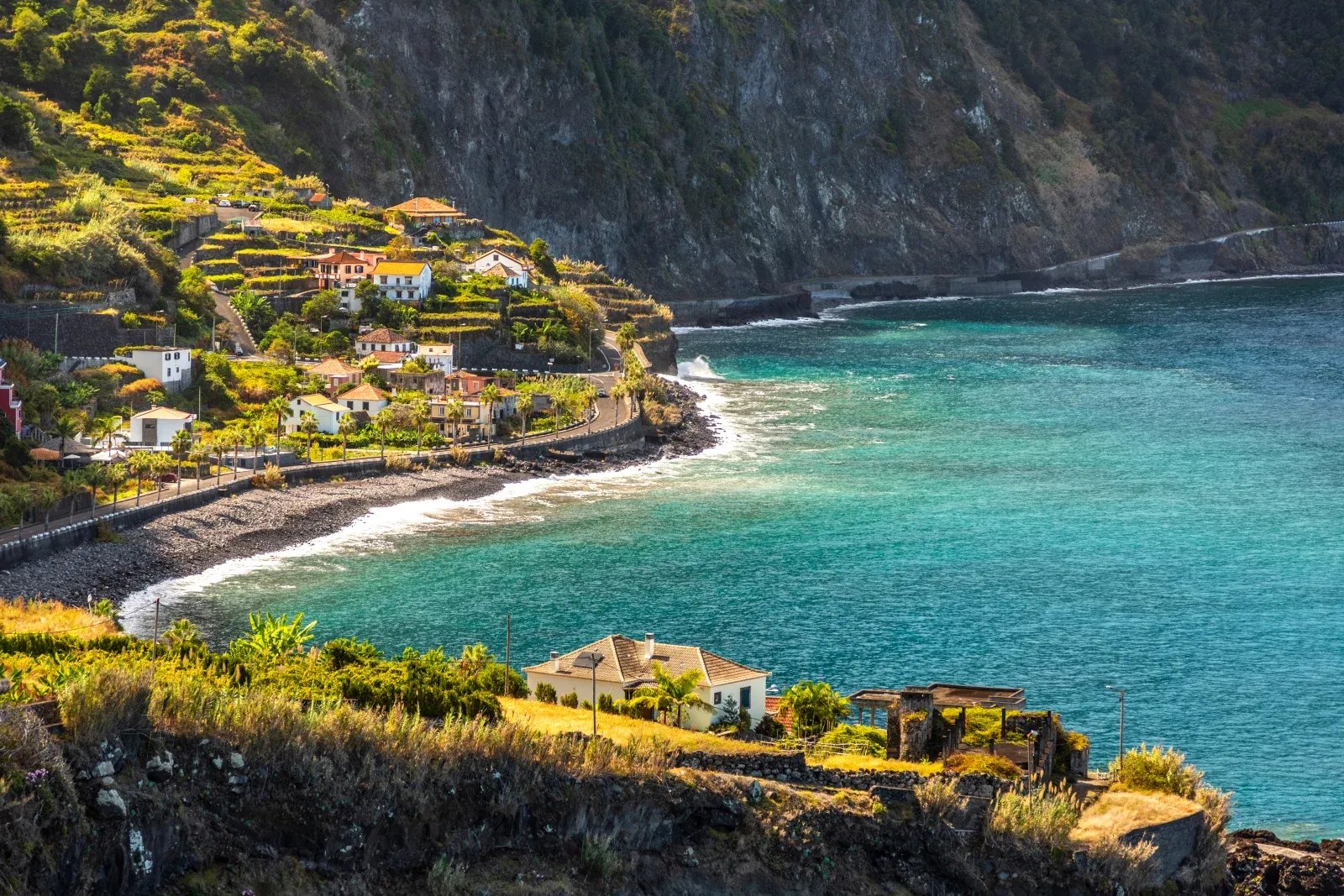
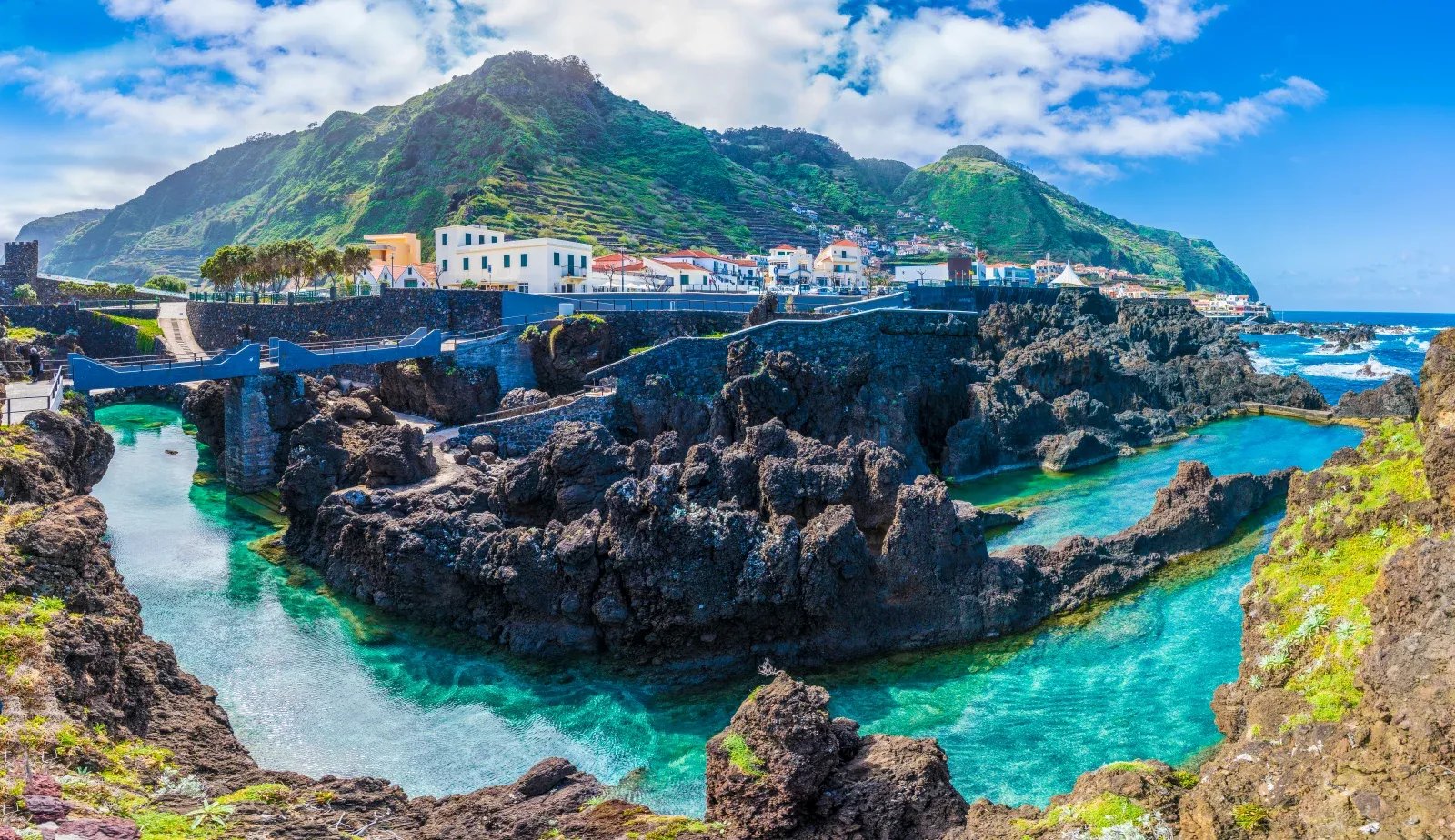
Bride's Veil Viewpoint
The popular lookout point is one of the symbols of Madeira, as from there, you can see a waterfall crashing into the ocean. We recommend it especially to those who like to hike, as the waterfall is a bit far, and it can be disappointing for those who come here to view it. There is also a gift shop here.
Caves of Sao Vicente
More than 890,000 years ago, the Sao Vicente Caves were formed by a volcanic eruption. The outer part of the lava flow cooled quickly, while the cooling of the inner spaces took longer. This created countless lava passages, many of which have been open to the public since the 1990s.
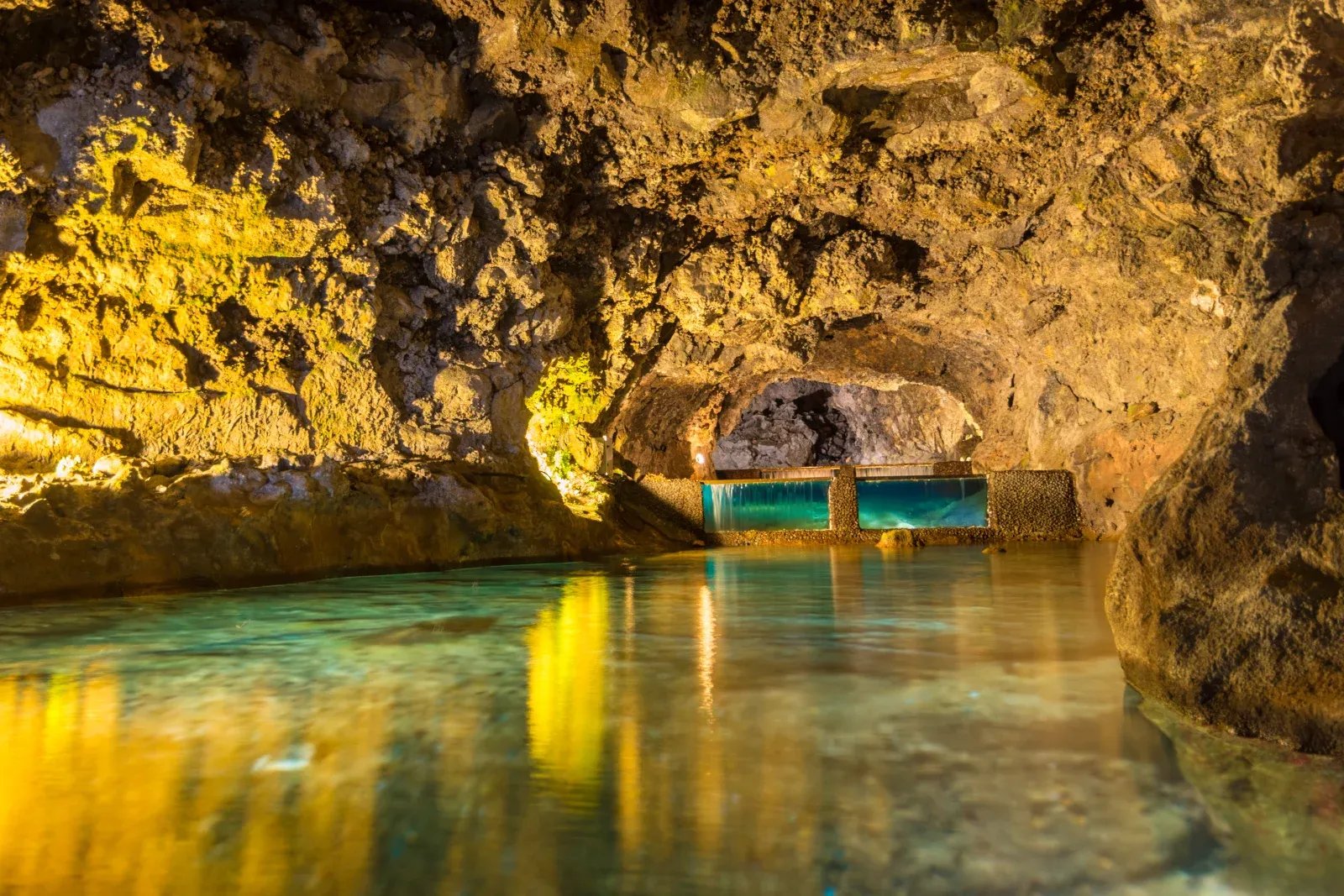
Santana and Surroundings
Santana is known for its traditional stone houses called Casas Típicas de Santana. Its speciality is that it has a steep, triangular thatched roof. An example of the houses can also be seen in the local Amusement Park, where exhibitions show local history, culture and traditions. Queimadas Park is also in the area, where you can see Levada routes and fabulous waterfalls.
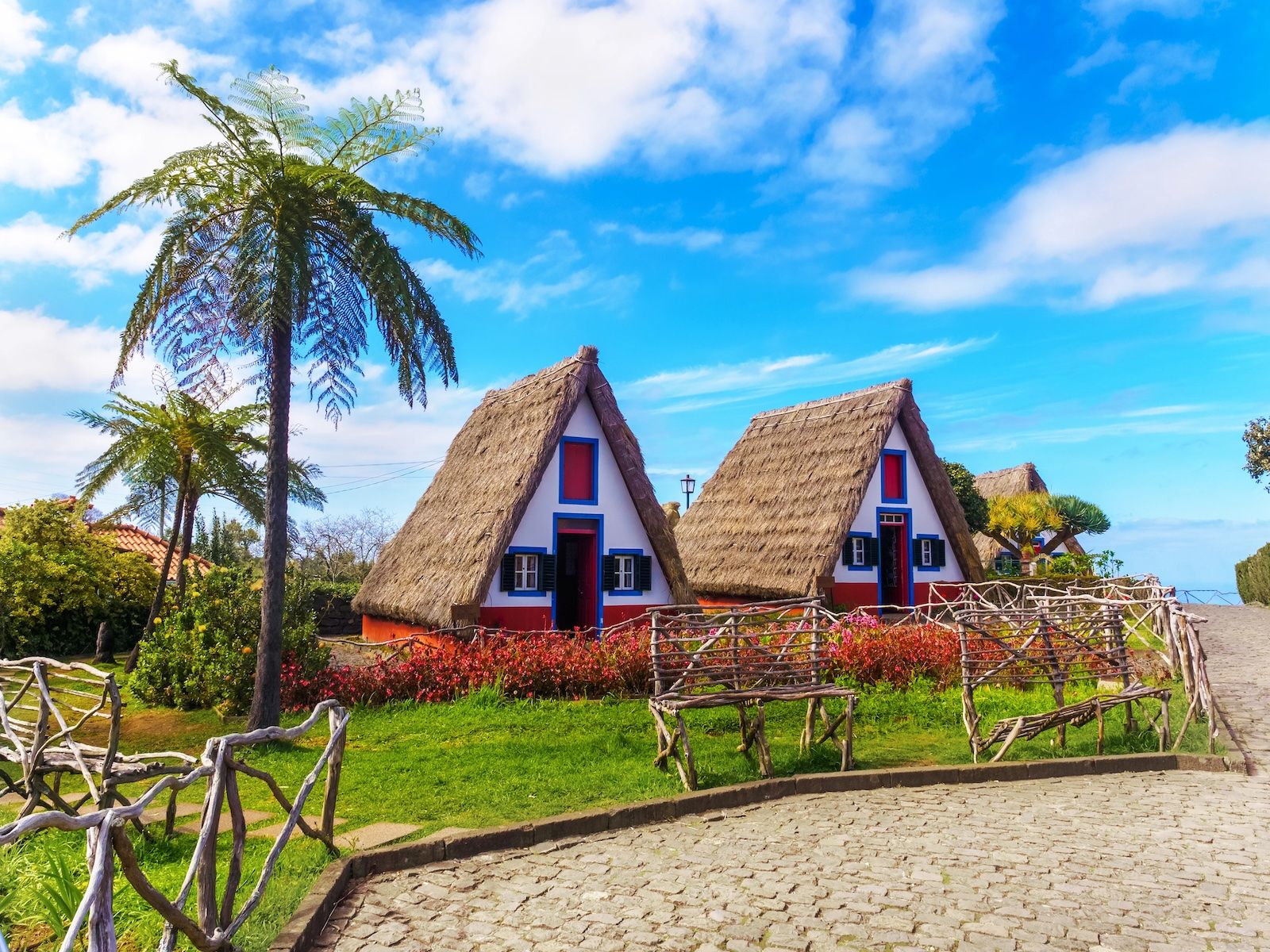
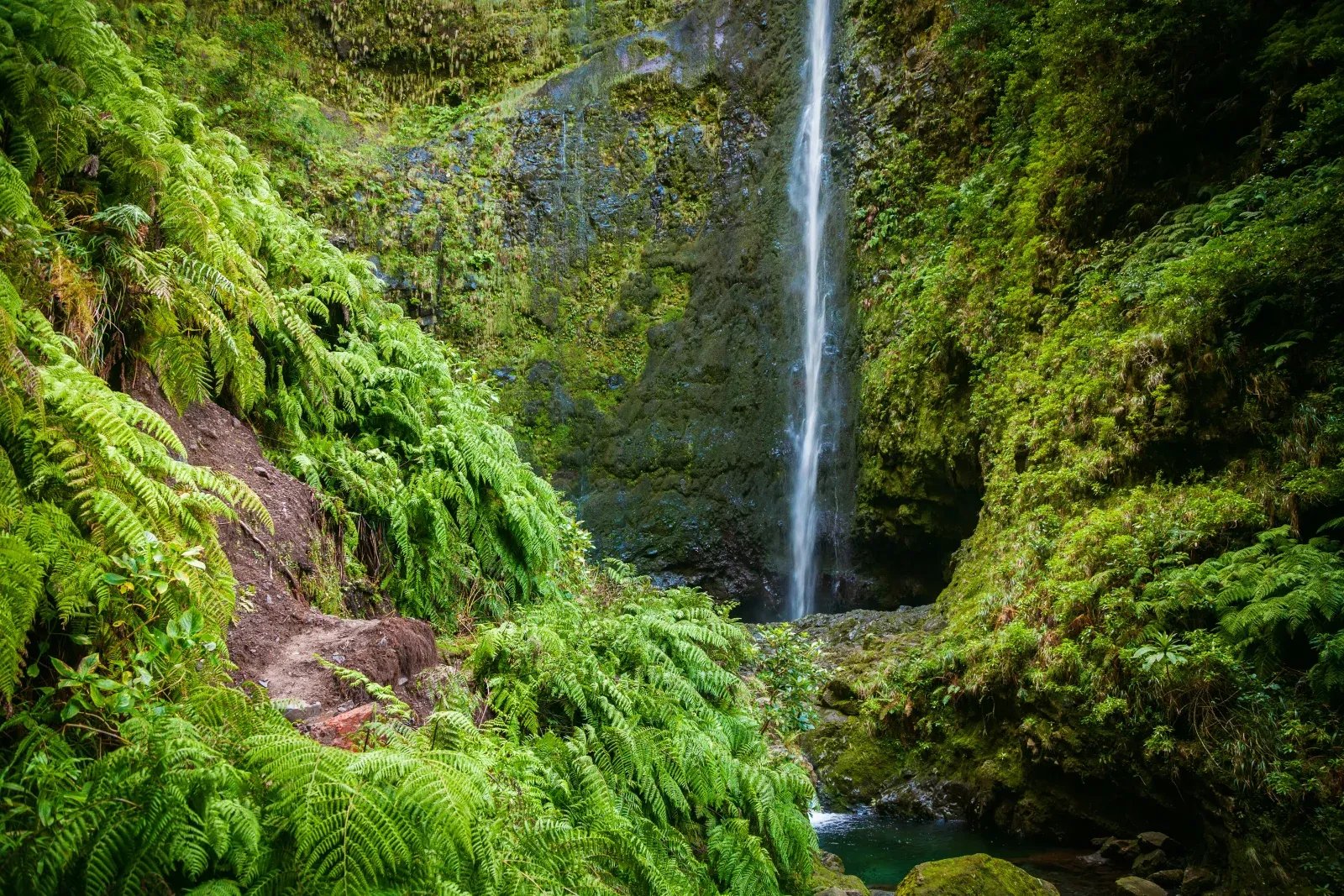
Fanal forest
In contrast to the sunny and friendly atmosphere of the countryside, the Fanal forest is popular because the fog that covers it makes it truly mystical, sometimes almost terrifying. Bring waterproof shoes and a raincoat, especially in the off-season. If you want to admire the forest in the fog, go in the morning. It doesn't matter when you go outside of the season; it's almost certain that you'll catch foggy and rainy weather.
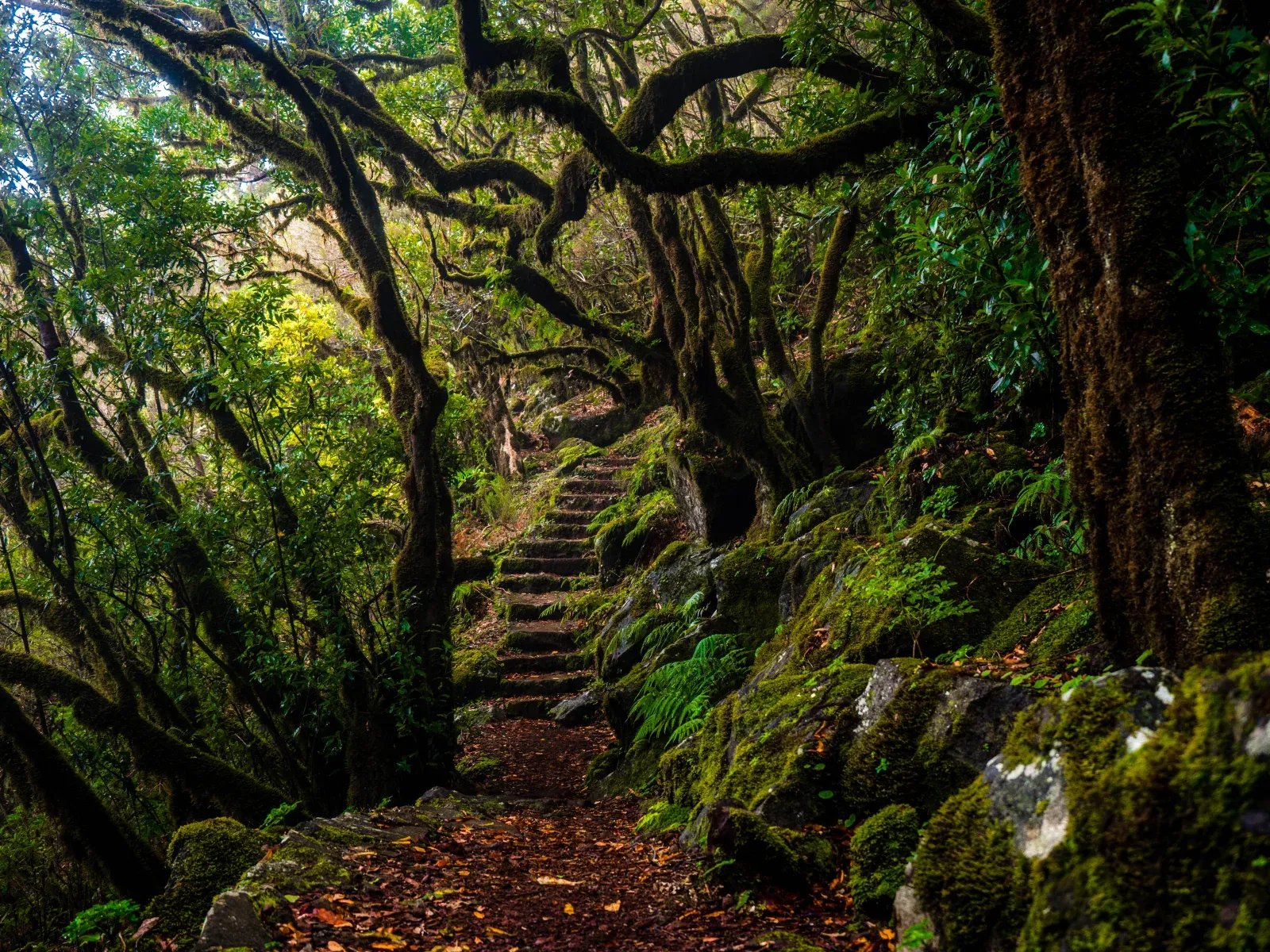
Curral das Freiras ( Valley of Nuns)
In the crater of an extinct volcano is the small village called "Valley of the Nuns" (Curral das Freiras). In 1566, the nuns of the Santa Clara convent fled the pirates who attacked Funchal, besieged their convent, and sought refuge in the valley. The village is still secluded today, and many of its residents lead a fully sustainable lifestyle.
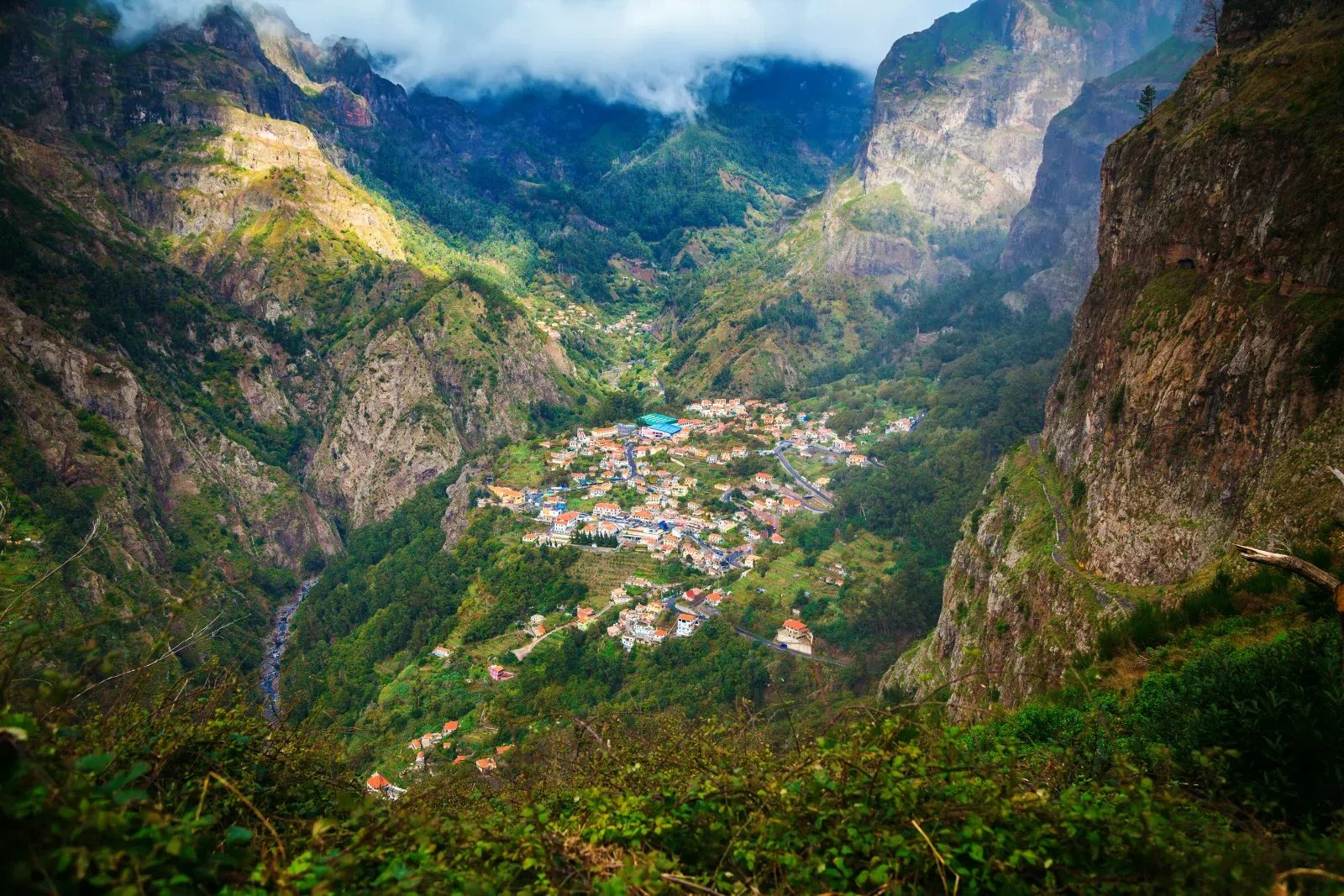
Bridal veil
The most beautiful waterfall in the region is Véu da Noiva or the Veil waterfall. Although you cannot walk down to the waterfall, you can admire it from above from several vantage points. The waterfall can be found not far from the town of Seixal in the north.
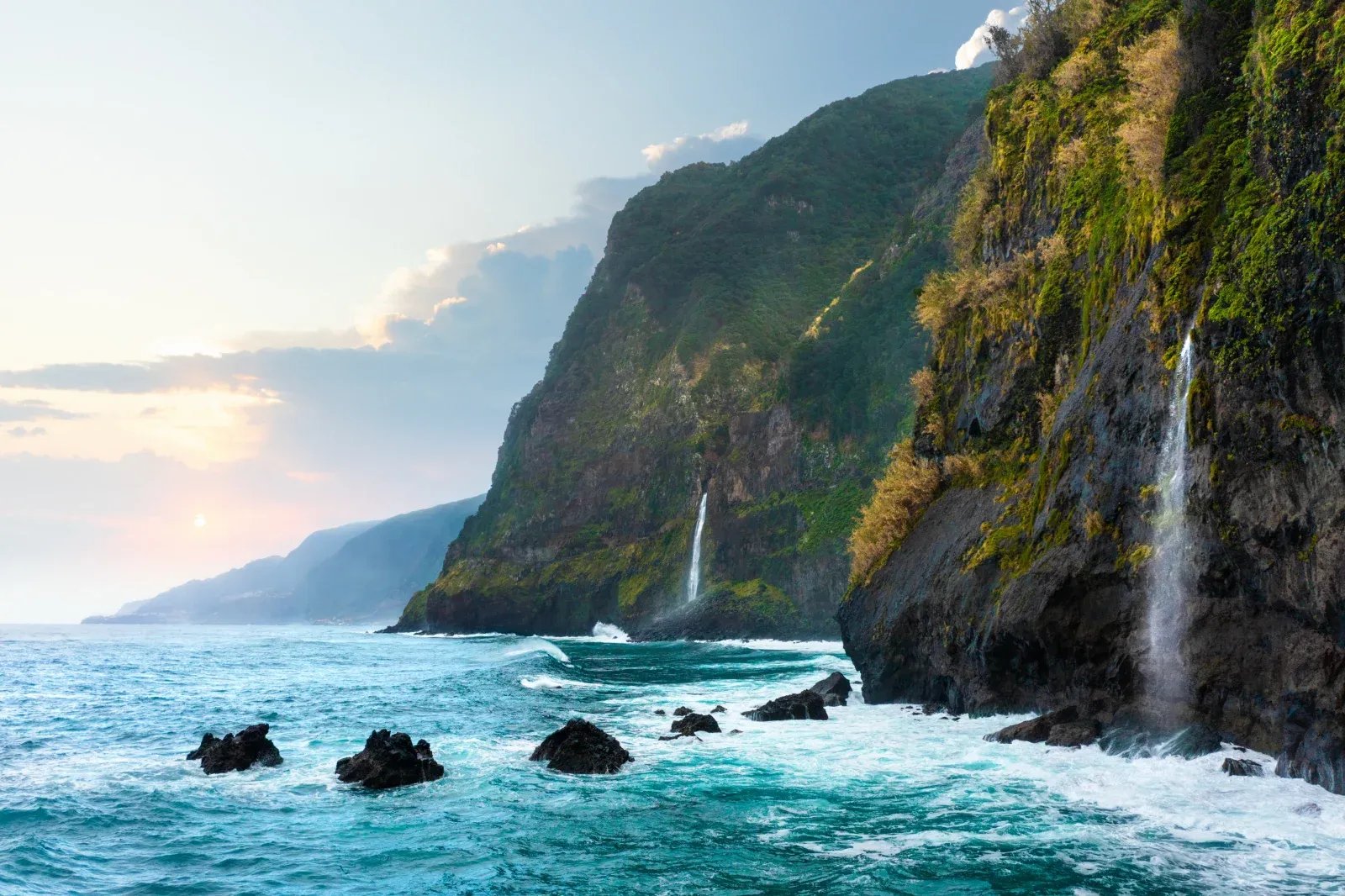
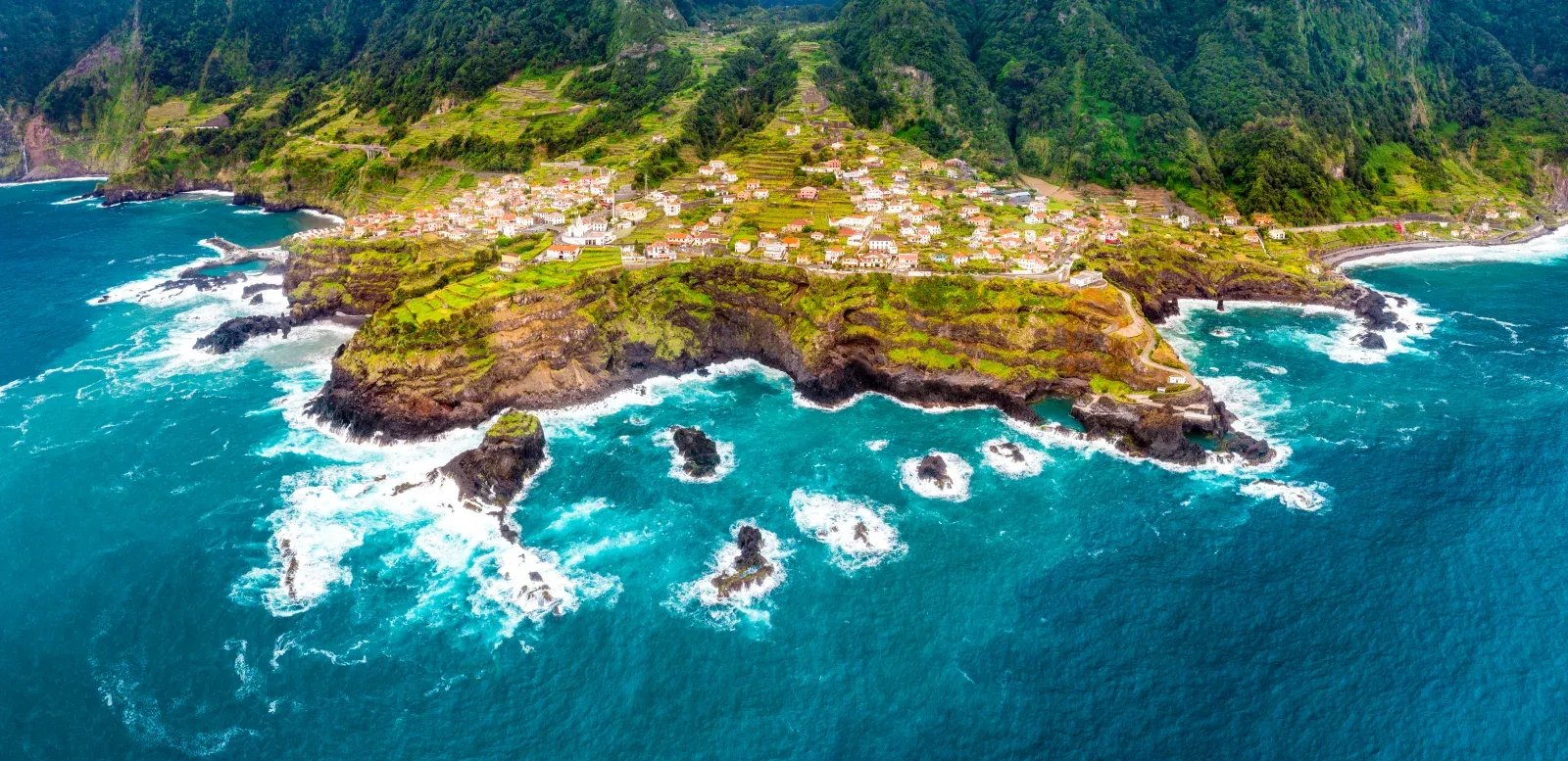
Ponta do Pargo Lighthouse
A small picturesque lighthouse at the far end. It is not a popular place; few people know it. so don't expect a crowd. Let's walk in the quiet neighbourhood, maybe explore the countryside on foot.
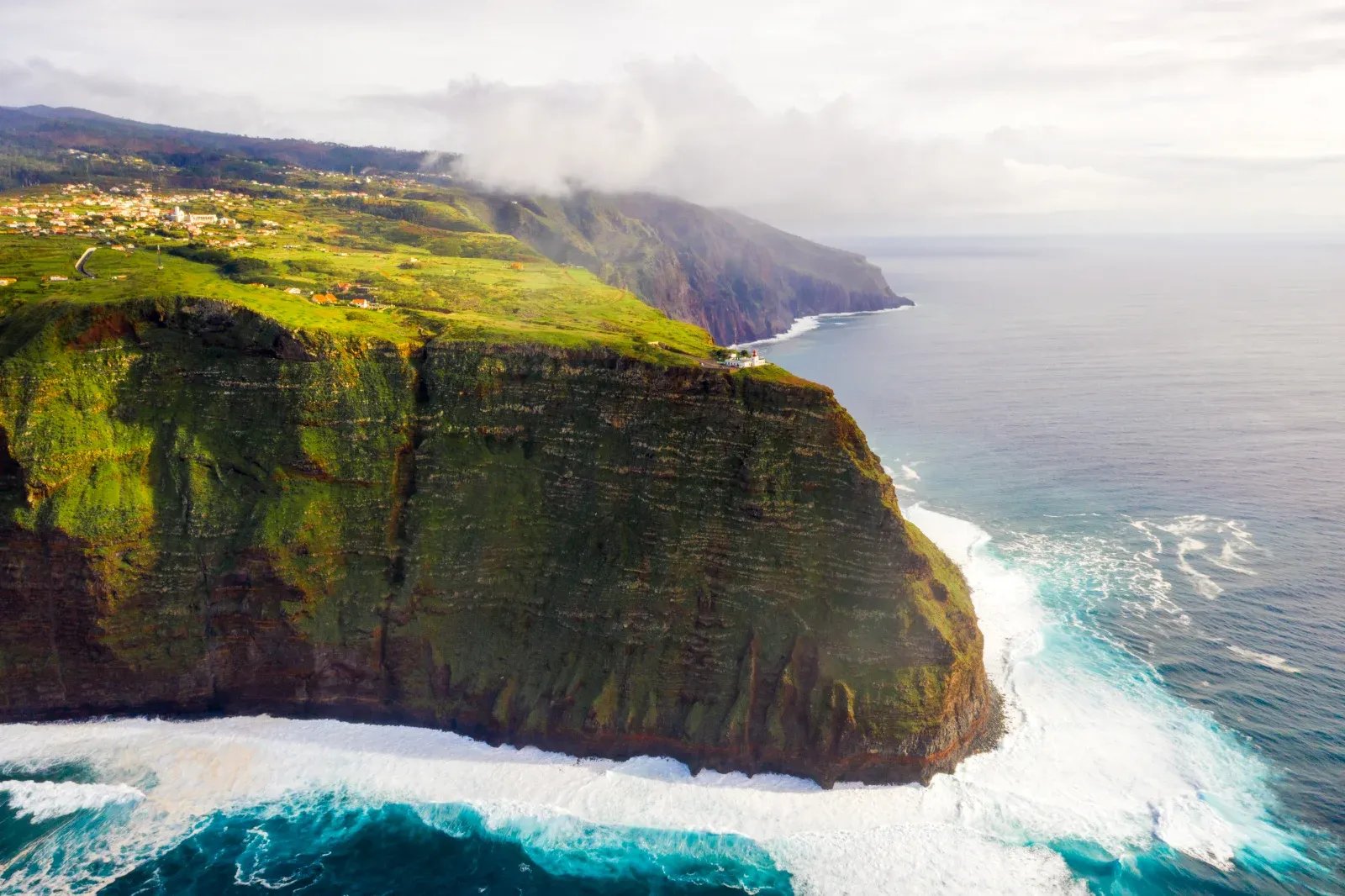
Cascade of Angels
Anjos waterfall is located on the west side. It almost falls on our car as we drive along the ER101. It's worth getting out at the parking facilities and wandering around.
Island of Porto Santo
Porto Santo is the northernmost. It is widely known for its spectacular beaches, stretching nearly 10 km. It is not as developed as Madeira, but in return, it offers more coastal walks and tours for nature lovers. Its most popular attraction is the famous Christopher Columbus House, a museum. Columbus lived and married in Porto Santo, so many streets and destinations still bear his name.
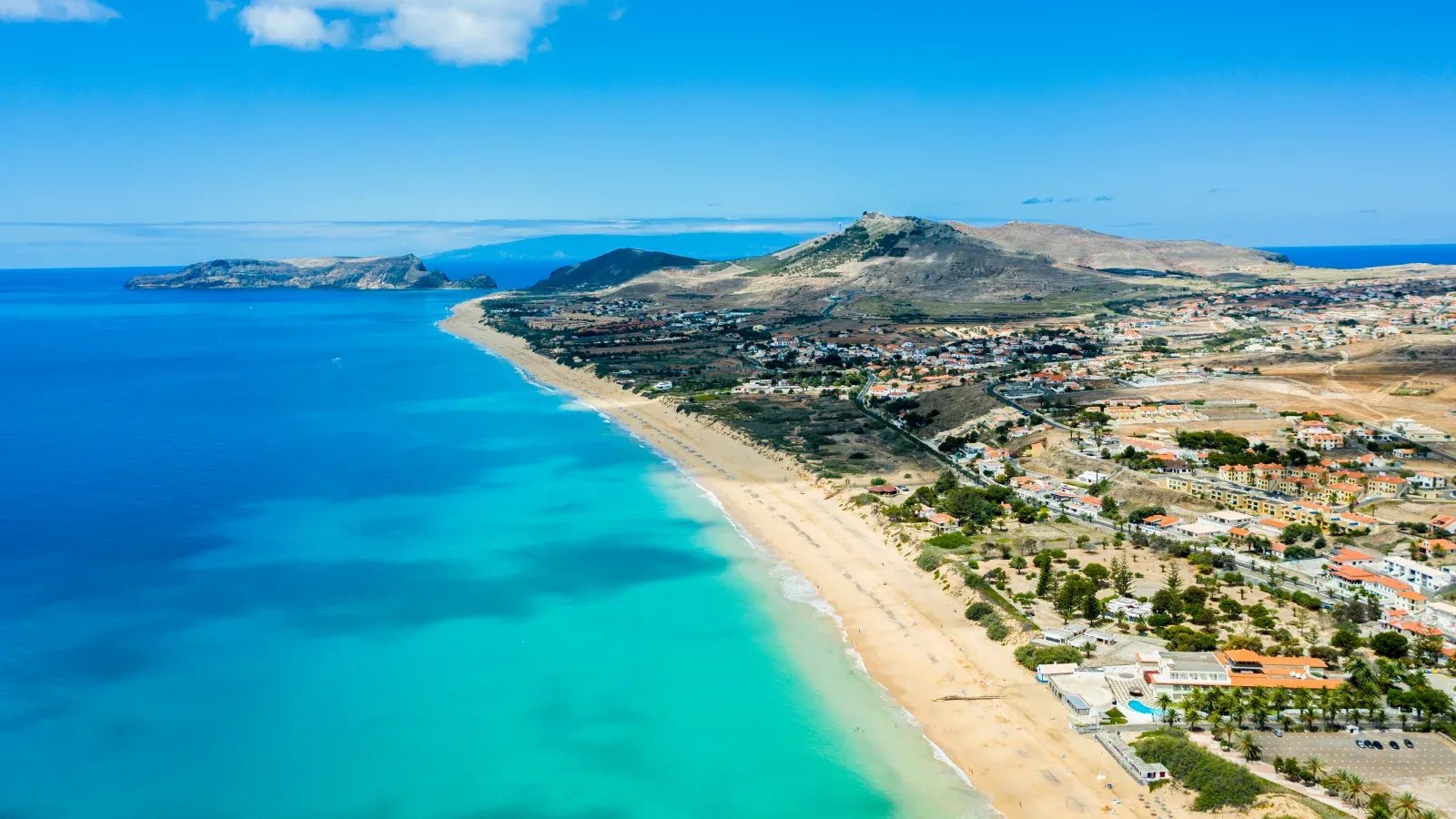
The five most popular cities
All of its many beautiful cities are worth a visit. Most of the cities are located near the coasts. Each settlement has unique characteristics and attractions. Sometimes they impress us with their historical heritage, sometimes with their charming streets and beautiful beaches, and sometimes with their picturesque hiking trails.
Funchal, the capital
Funchal (the capital) is known for its beautiful architecture, cosy streets and colourful markets. The city also has many historical landmarks, including the São Tiago Fort, the Sé Cathedral and the Botanical Gardens. Funchal is also a popular destination for nightlife, with plenty of bars, restaurants and nightclubs.
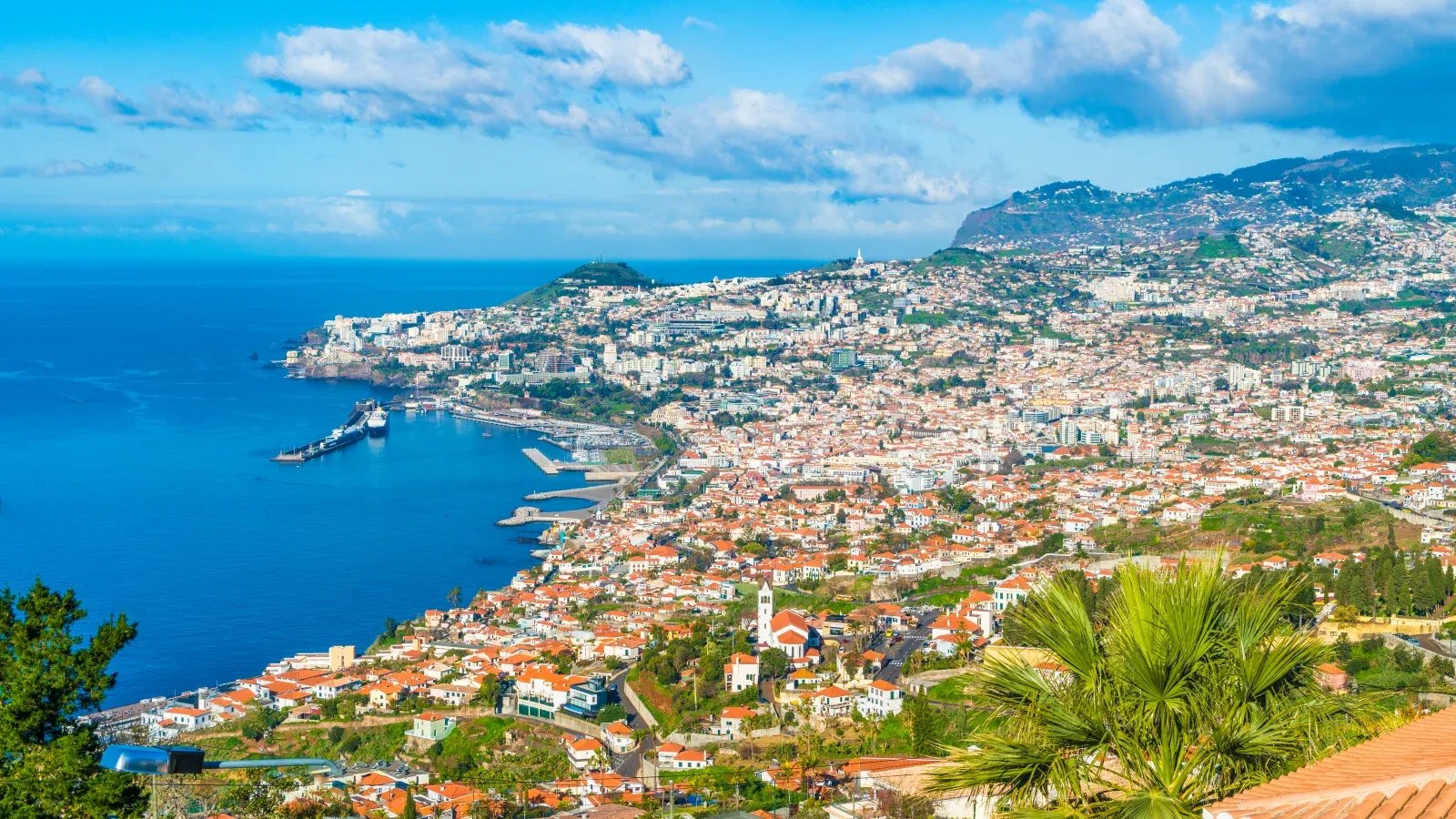
Câmara de Lobos
Câmara de Lobos is a picturesque fishing village on the southwest coast. The village is known for its colourful boats, quaint streets and beautiful ocean views. The city is also famous for its wine production – home to several wineries and wine cellars.
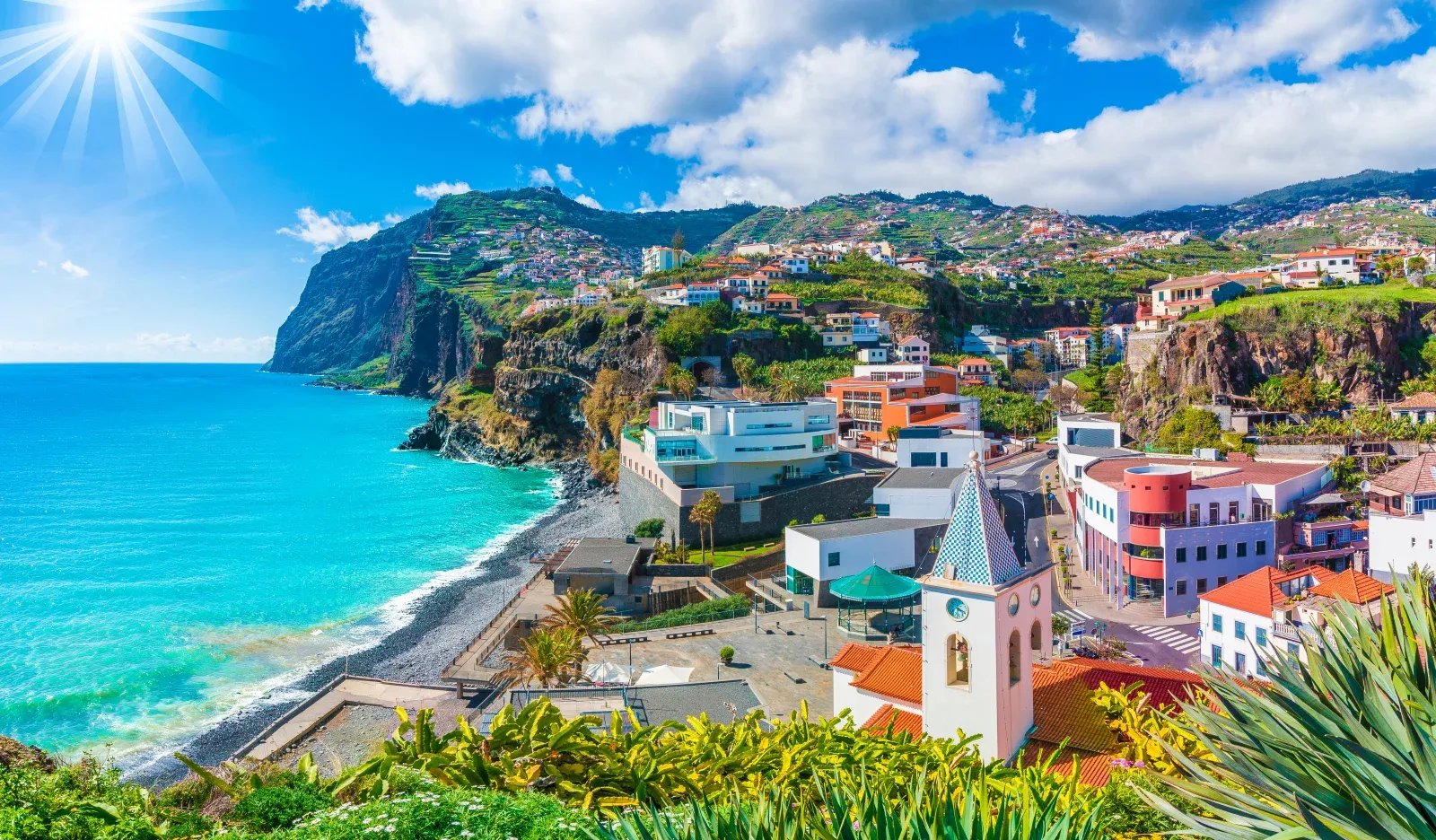
Santana
Santana is a charming town on the north coast. It is known for its traditional thatched houses, a unique feature of the local architecture. Santana has many hiking trails, including the famous Levada do Caldeirão Verde.
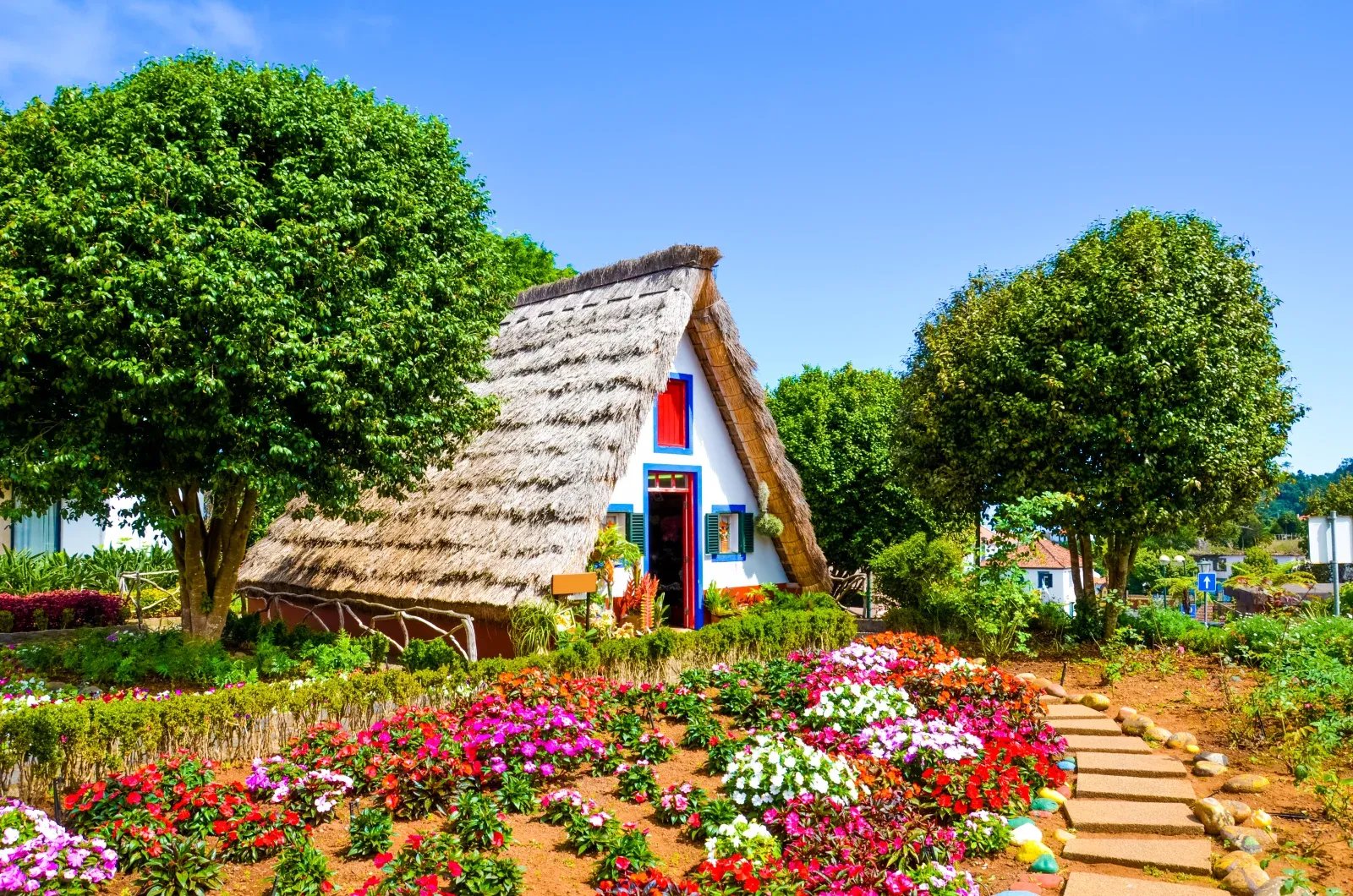
Machico
Machico is a historic town on the east side. The town is famous for its sandy beach, which is one of the oldest on the island, and for its historical attractions, such as the Nossa Senhora da Conceição Church and the São João Baptista Fort.
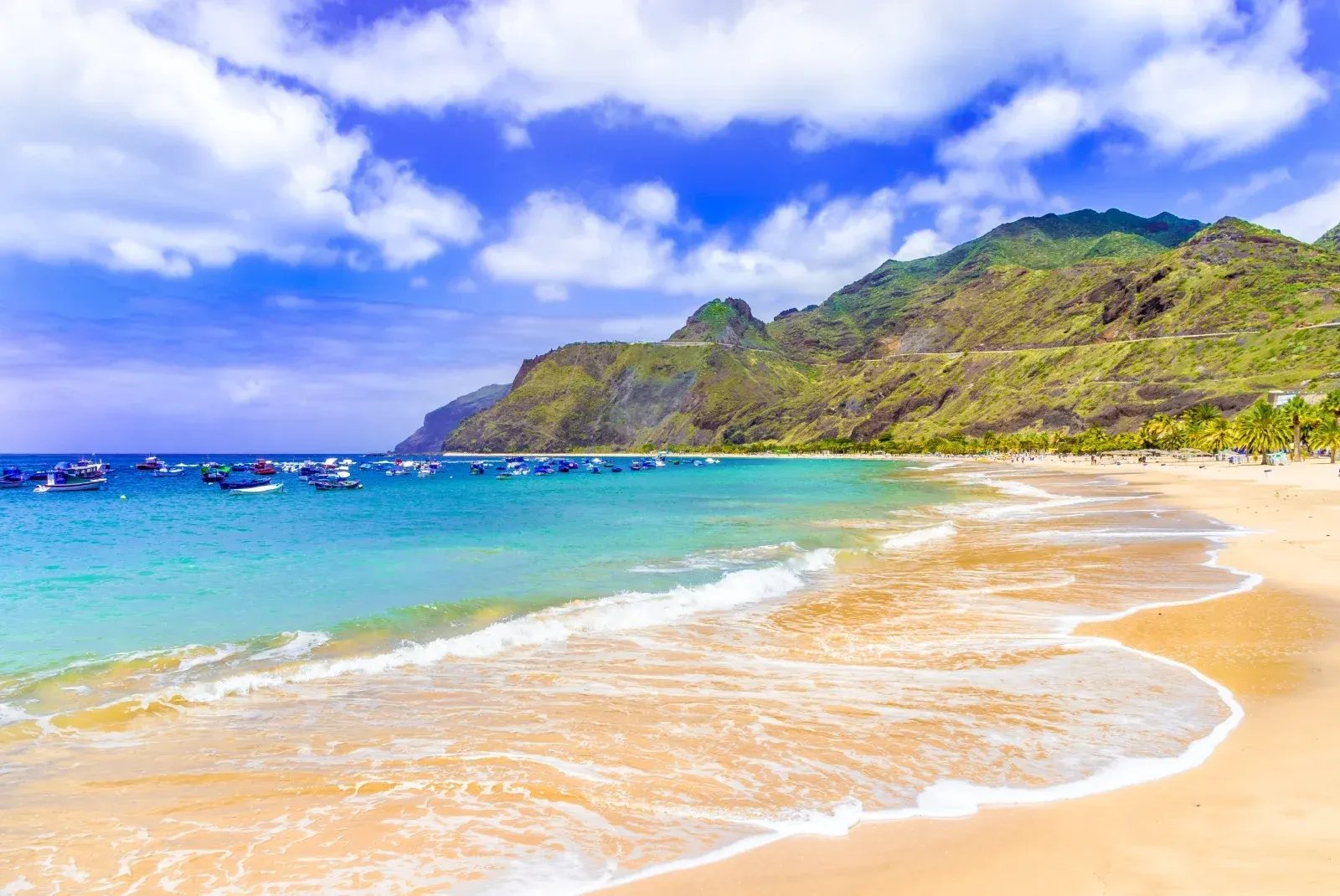
Ponta do Sol
Ponta do Sol is a picturesque town on the southwest coast. It is home to several hiking trails, including the Levada Nova Trail and the Levada do Moinho. One of the best examples of local life is the coastal villages. And Ponta do Sol is arguably the most beautiful. The line of pastel buildings and the magnificent pebble beach give the village its unique charm.
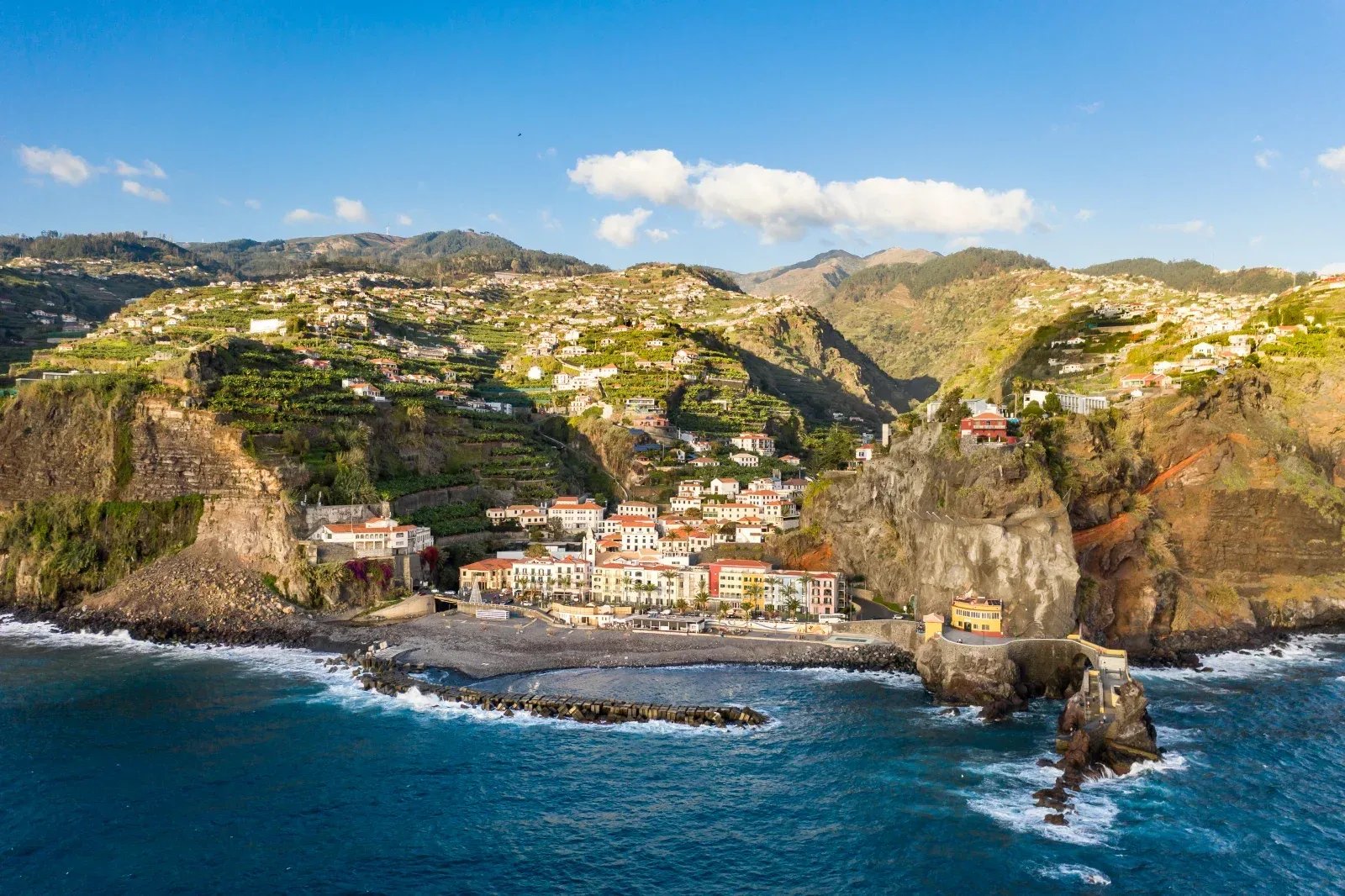
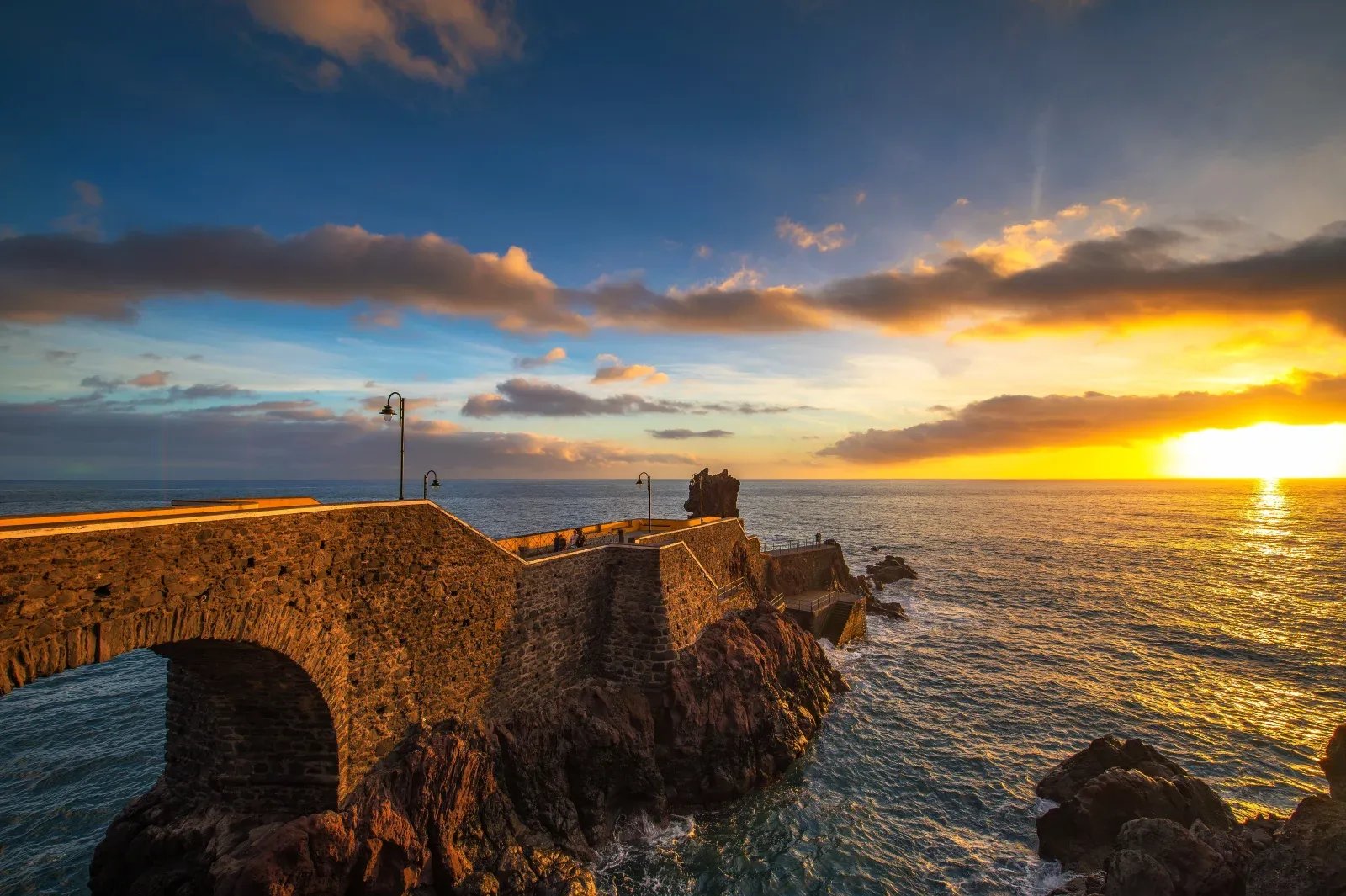
Boat Trips
Undoubtedly, boat trips are the most popular activity of the season. There are plenty of dolphin and whale watching tours and island hopping tours - most of which go to Desertas. In Funchal, you can find around ten tours/day in season. A trip costs an average of 60 euros per person.
Water Sports
- Diving is a must here. Whether you are a beginner or an advanced diver, let's splash around in the Aquarium, find a beach where you can dip in the ocean, or perhaps go out on a boat to the open water.
- Grab a snorkel kit and head to the beach; you won't regret it.
- Kayaking is one of the most popular activities. Kayak rental starts at 40 euros per adult.
- There are plenty of opportunities for surfing. Sao Vicente, Machico, Porto da Cruz and Calheta also have surf camps where you can learn the technique or rent equipment. If you are a beginner, you should join a multi-day camp.
Hiking and Excursion
The interior of the area can best be forgotten by hiking. It shows a fascinating side of the landscape that you cannot see from your car. Rugged mountains and lush forests dominate the landscape. With its diverse landscapes, the island offers a variety of hiking trails for all levels of hikers, from beginners to advanced. Here are some of the best routes:
Pico Ruivo (1861 m)
At 1,861 meters, Pico Ruivo is Portugal's third-highest peak and the highest point on the island. The Ruivora Advanced Trail is one of the most popular hiking trails, taking about 2 hours to complete. The panorama from the top is breathtaking. Those looking for adventure must complete this 5.6-kilometre hike.
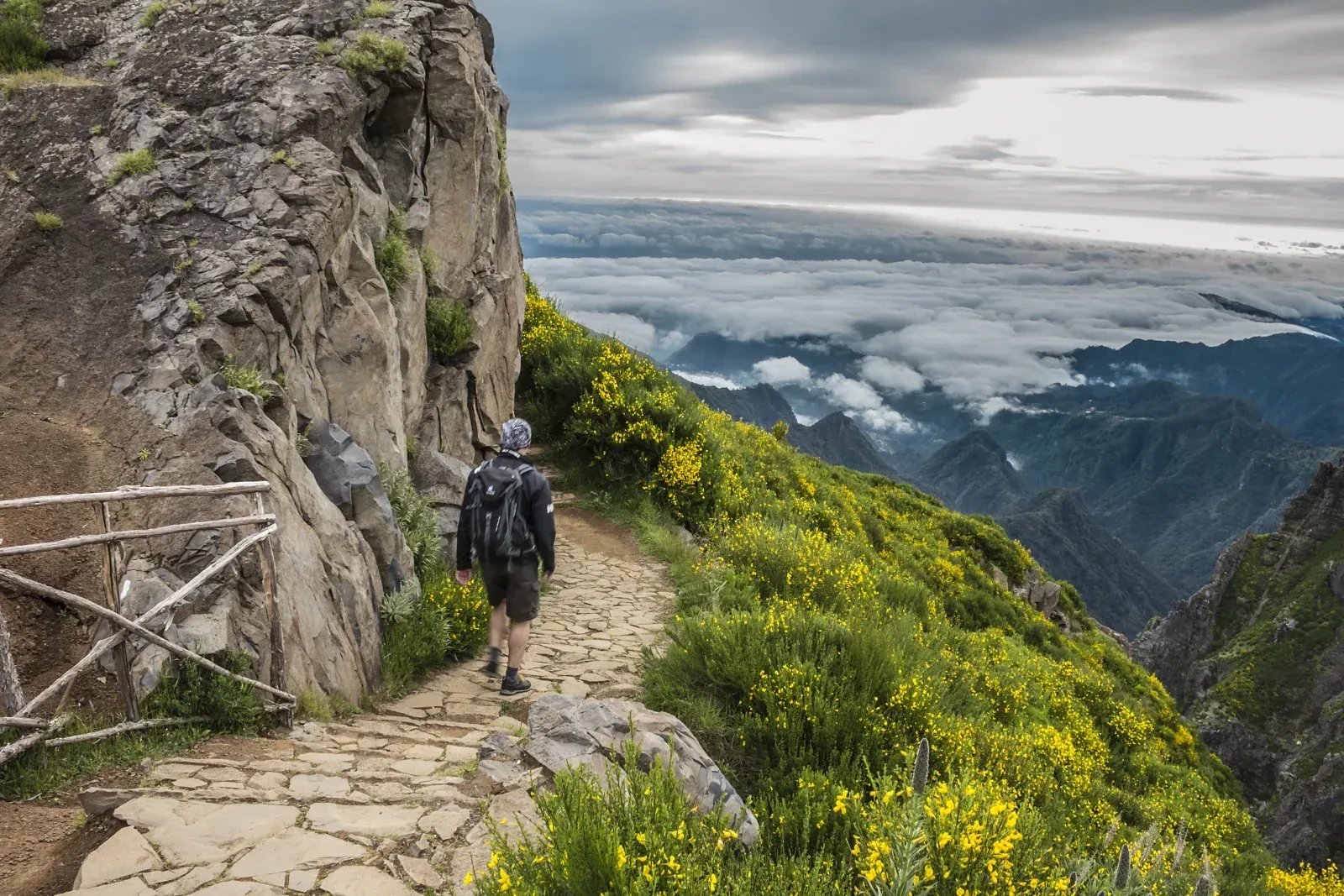
Levadas
Levadas are narrow irrigation canals that transport water from the mountains to agricultural areas in the valleys. Most of them date from the 15th century. The levada walks lead along this open canal system, offering some of the most scenic and peaceful hiking trails. They can be found both in the wet regions of the north and in the drier regions of the south.
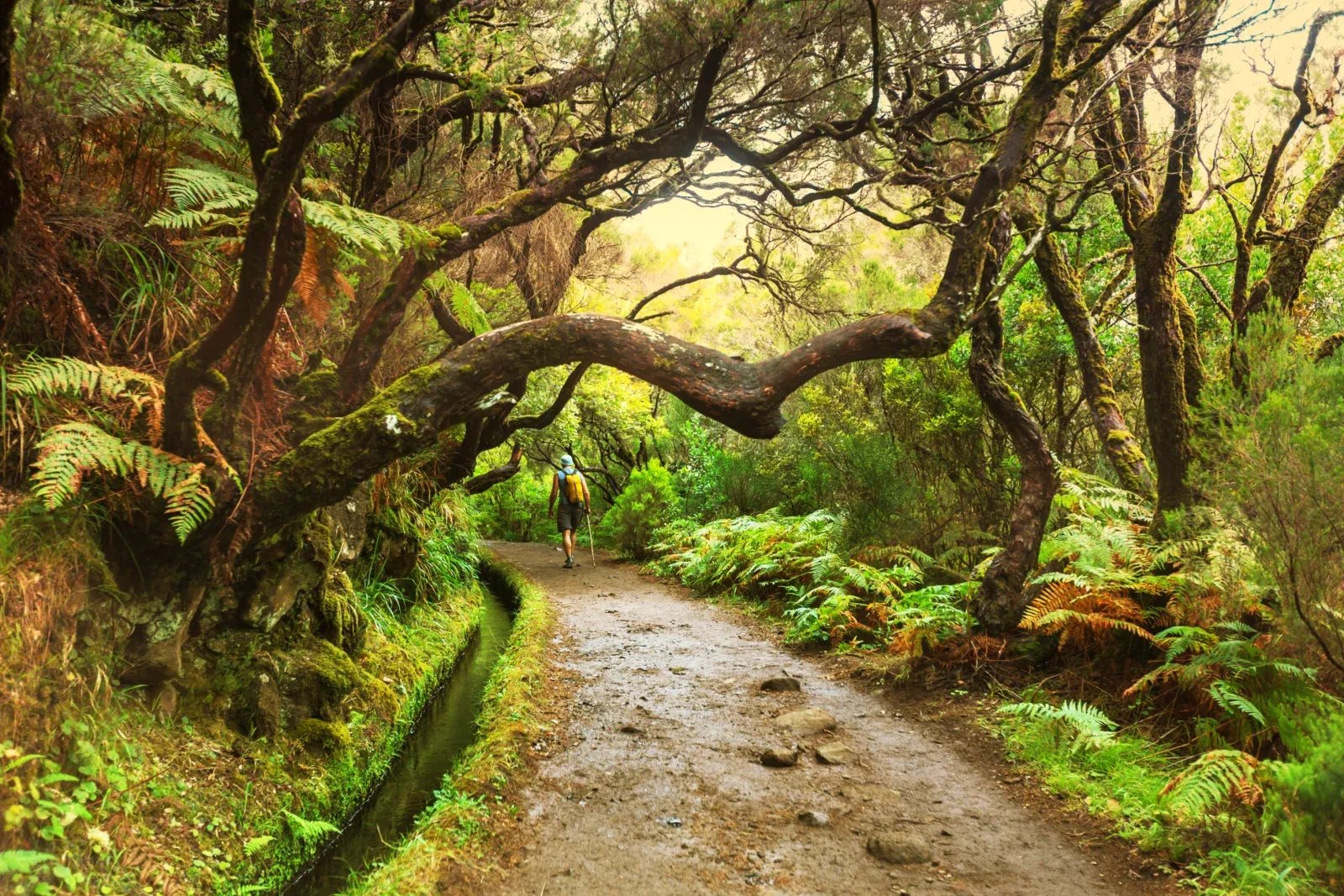
Ponta de Sao Lourenco
At the easternmost tip, Ponta de São Lourenço offers a unique hiking experience with a stunning view of the Atlantic Ocean. The hike is relatively easy, and the trail is well-maintained, so it is also suitable for beginners. You can read more about the popular excursion point in the attractions section.
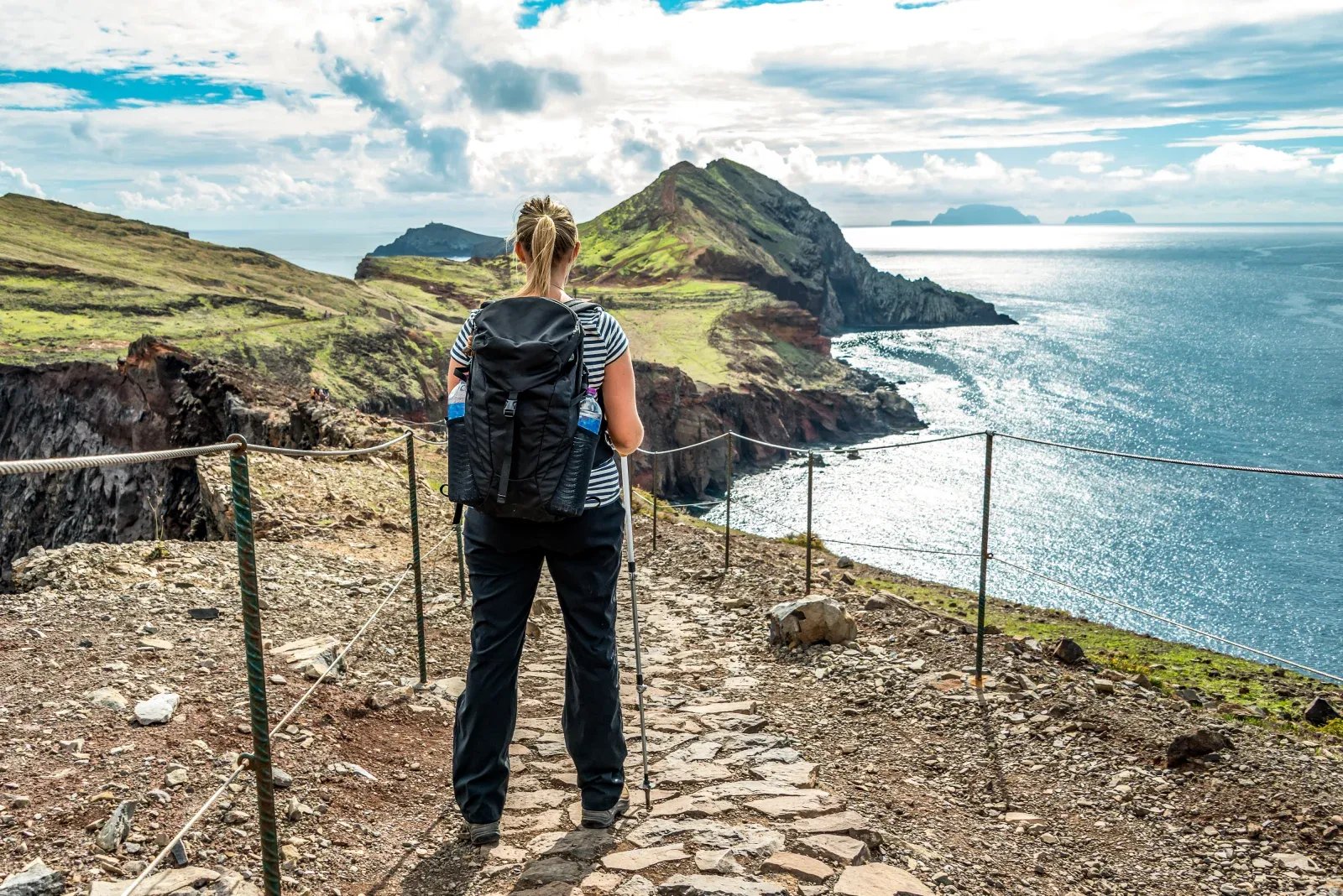
Queimadas Forest Park
Queimadas Forest Park is located in Santana, in the northern part. This park offers several hiking trails that lead through the lush green forest to the famous Caldeirão Verde waterfall.
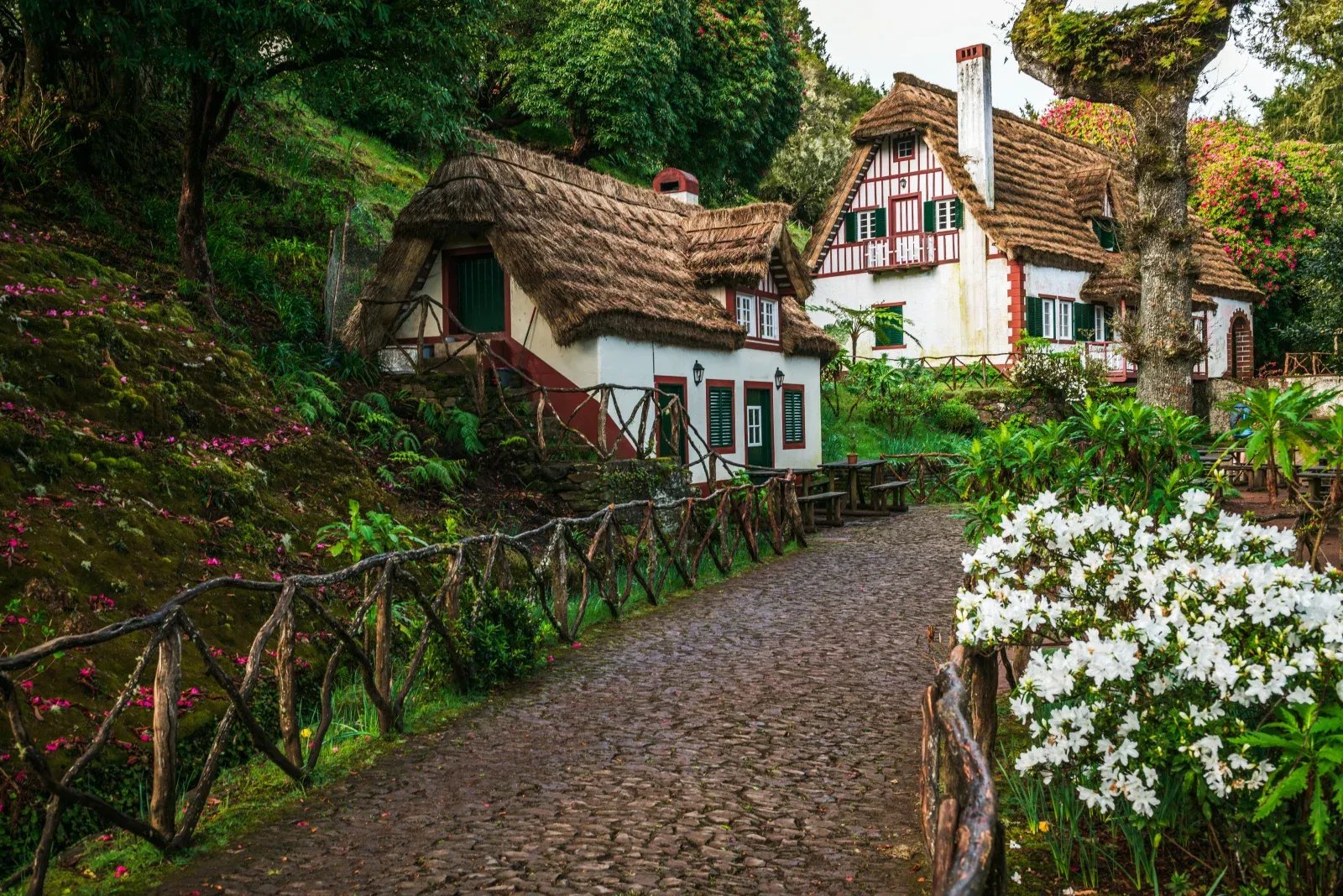
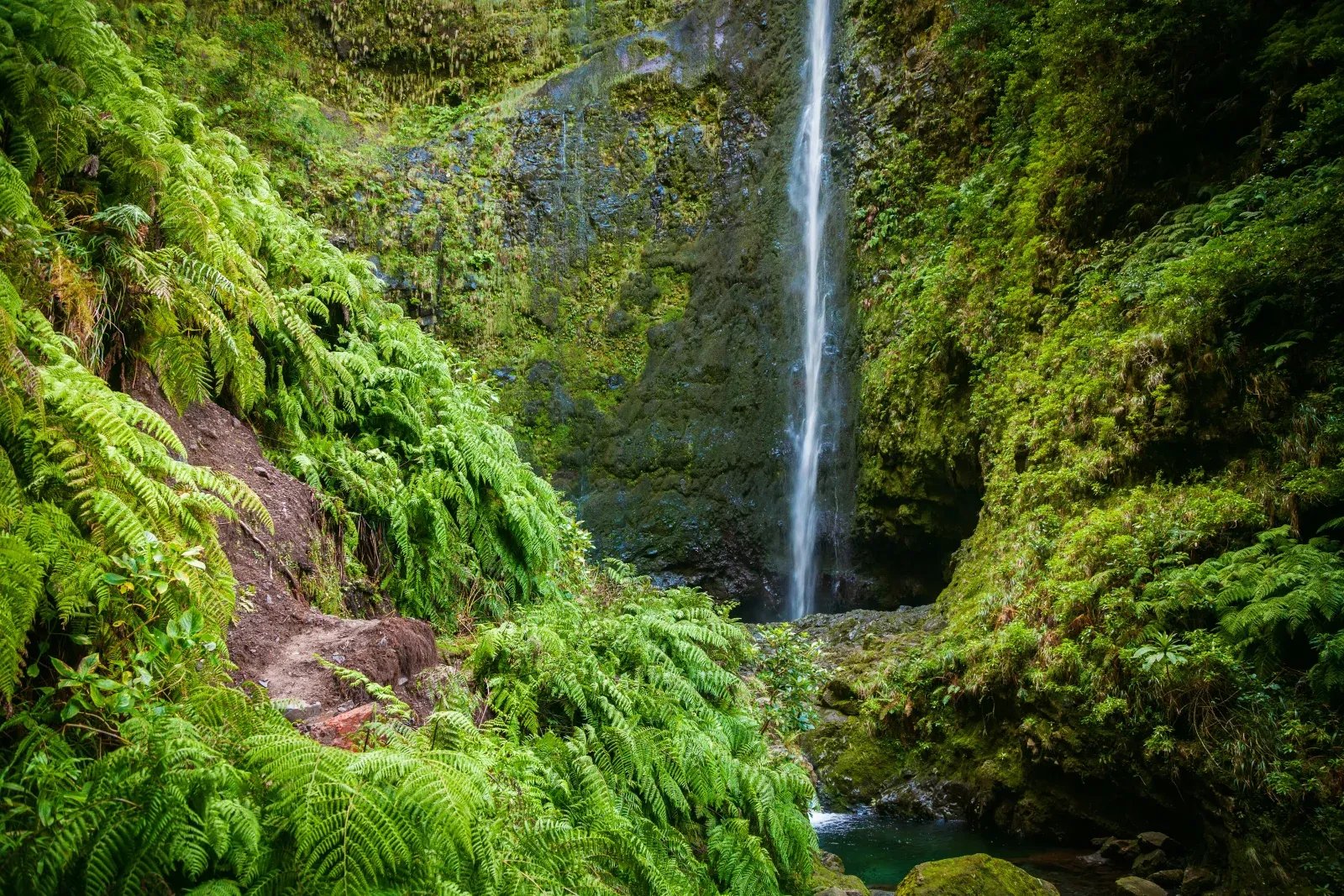
Areeiro footpath
The hiking trail starts from Pico do Areeiro and then follows a ridge, offering a wonderful panoramic view of the surrounding landscape. The trail is relatively easy but may be challenging for some due to its narrow path and steep slopes.
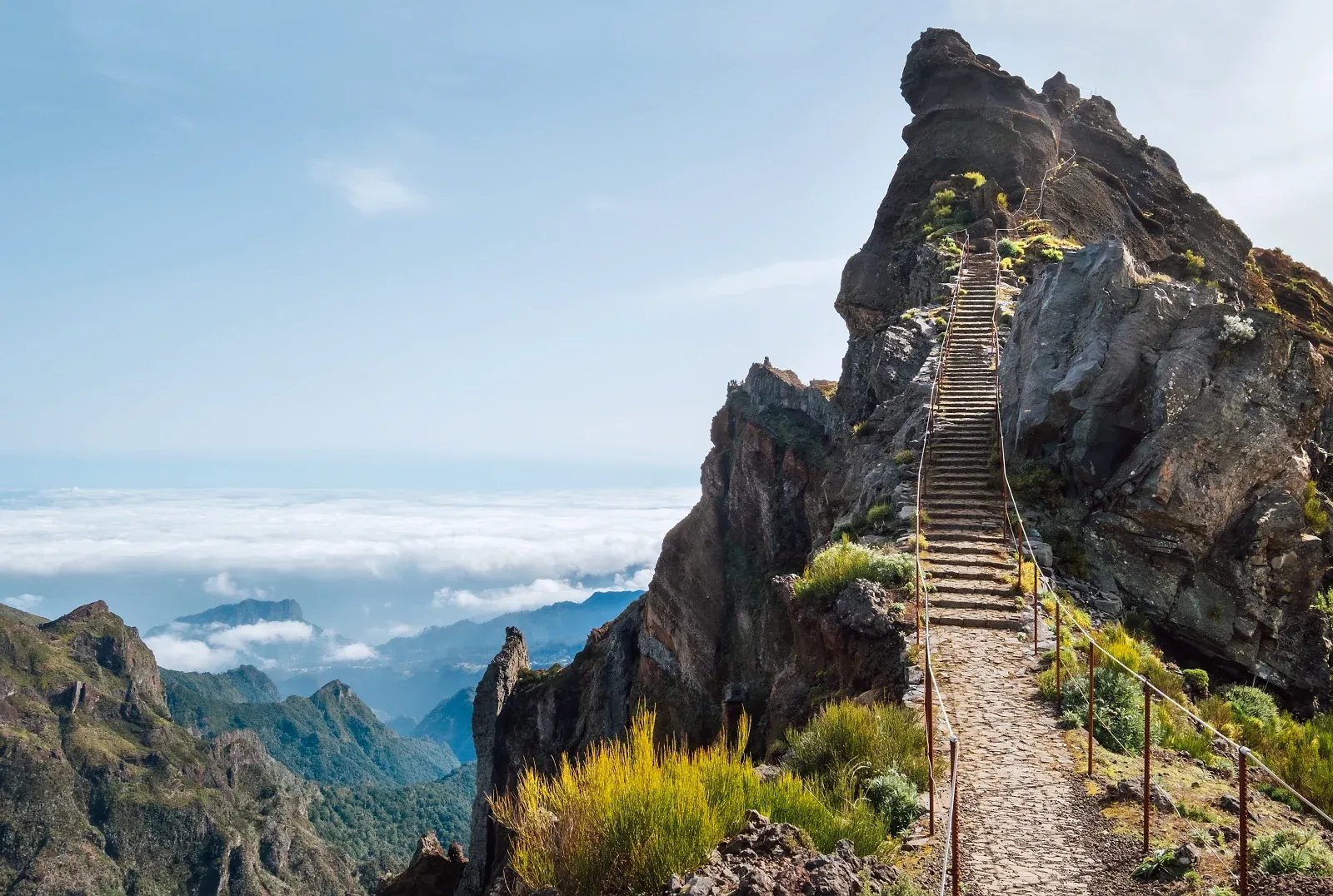
When is the Flower Festival?
The Flower Festival is held every spring, April or May. The flowers must be fully bloomed, so the exact date varies yearly. In 2023, it took place between April 27 and May 21. It usually lasts a month, with more than a thousand participants - mostly locals. The festival is held in Funchal, the capital.
When to Travel?
The region is most beautiful between April and October when the coastline teems with up to 20 species of whales and dolphins. In addition, you can see the most flowers in late spring, April and May.
From a weather point of view, it is worth knowing that it is characterized by a pleasantly mild Mediterranean climate throughout the year, but spring is still quite rainy. If you want to enjoy water sports and swimming, you should preferably go after June, because the waters are still cold until May.
- Summer is the best time for whale watching. The daytime temperature is typically around 24°C, but between June and August on the eastern side, the dry, hot wind blowing west of the Sahara can rise to 33°C. Early mornings in June and July are often cloudy, which gradually dissipates during the day.
- The autumn months of September, October and November are usually quieter, but the sun is still pleasant, and the sea is warm enough for comfortable swimming. The precipitation is starting to pick up, but the temperature is stable. Expect a temperature of around 22°C, perfect for walking as plenty of shade protects you from the sun.
5-day itinerary
Being a small area, you can drive around in just a few hours. If we don't want to go to the beach, you can see the main attractions in five days.
| Madeira 5-days-itinerary | Details |
|---|---|
| Day 0 | Arriving to Funchal |
| Day 1 | Valley of the Nuns | Funchal Oldtown and market |
| Day 2 | Pico do Arieiro | Funchal Monte Palace | Botanical Gardens | Gabo Girao |
| Day 3 | Sao Lourenco hike | Santana houses | Sao Vincente |
| Day 4 | Miradouro do Véu da Noiva lighthouse and waterfall | Porto Moniz | Fanal Forest |
| Day 5 | Levada walks |
We hope you found this article helpful. If so, save this link for later or share it with your friends. Have a nice trip! Trekhunt team ❤️
